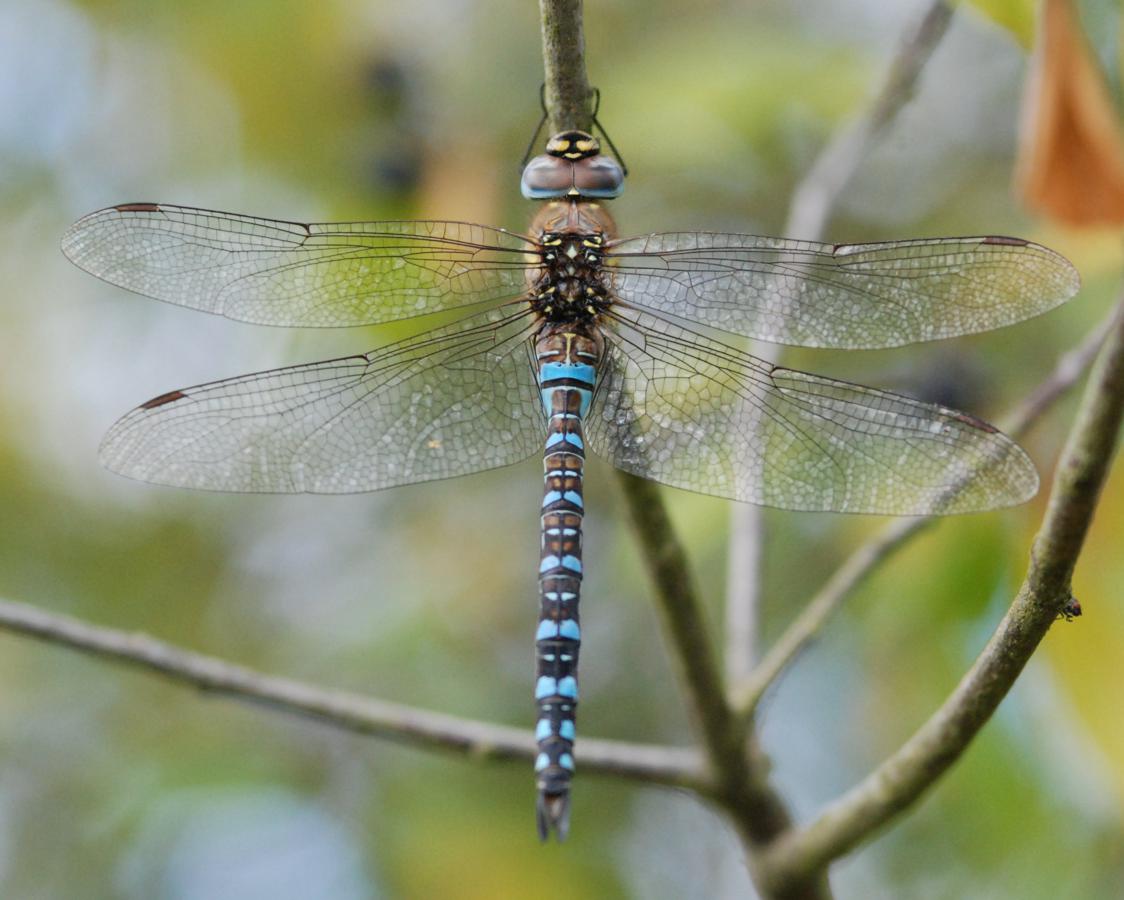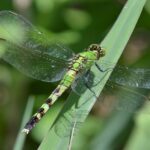How to identify
The Migrant hawker is mostly dark brown and black in colour. The male has pale blue spots and yellow flecks all along the body, dark blue eyes, and pale yellow-and-blue patches on the thorax. The female has yellowish spots and brownish eyes. The black-and-blue hawkers are a tricky group of dragonflies to identify. The Migrant hawker is smaller and has more brown on it than the other three large species (Common, Azure and Southern Hawkers) and is not on the wing at the same time as the Hairy Dragonfly.
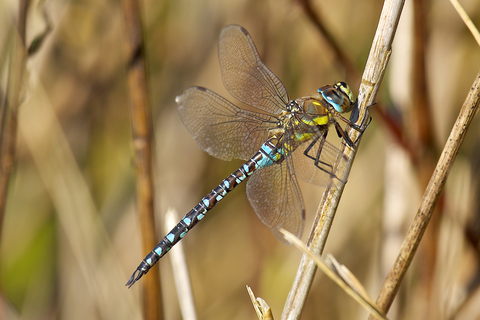
A small Hawker with paired spots along the abdomen.
Male: dark with blue spots and yellow flecks.
Female: brown with yellow spots.
Status & Distribution
Widespread across much of England and Wales, apart from the far north of England, although its range is increasing. First recorded in Scotland in 2003, the Migrant Hawker has since colonised multiple new sites. The species has increased its range dramatically northwards in recent decades.
Habitat
Breeds in standing water but may be found well away from water along hedgerows or woodland edges.Frequently resting low in vegetation.Likes to hawk for insects along sheltered woods and hedgerows.
A. mixta is found throughout central and southern Europe, north Africa, the Middle East and across Asia to China and Japan. As it is a migratory species it can occur outside its normal range and in recent years it has been spreading northwards. For example in the United Kingdom this insect was rare until the 1940s when it began migrating from the continent in large numbers. It continues to do so and is now a resident breeding species throughout England and Wales. It reached the Isle of Man in 1998 and Ireland in 2000. It breeds in lakes and ponds and is tolerant of brackish water. It is also found away from water hawking high amongst trees and bushes, but often resting low on vegetation. A specimen was discovered in early August 2011 adjacent to a riparian park in Calgary, Alberta.
Adult Identification
- Length: 63mm
- The costa (leading wing vein) is brown.
- Short pale yellow ante-humerals stripes on the thorax.
- Yellow “golf-tee” shaped marking on S2 near the top of the abdomen.
- Paired spots down the abdomen.
- Male: dark with blue spots and yellow flecks along the abdomen. Blue eyes.
- Female: brown with yellow spots along the abdomen (occasionally blue). Brown eyes.
- Not aggressive towards other individuals and occasionally seen in large feeding swarms.
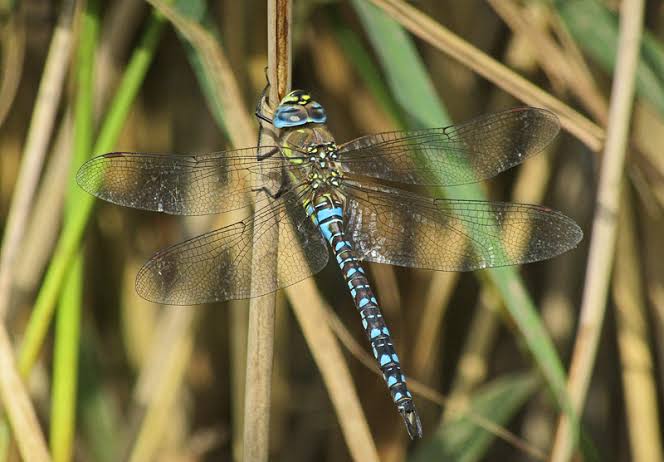
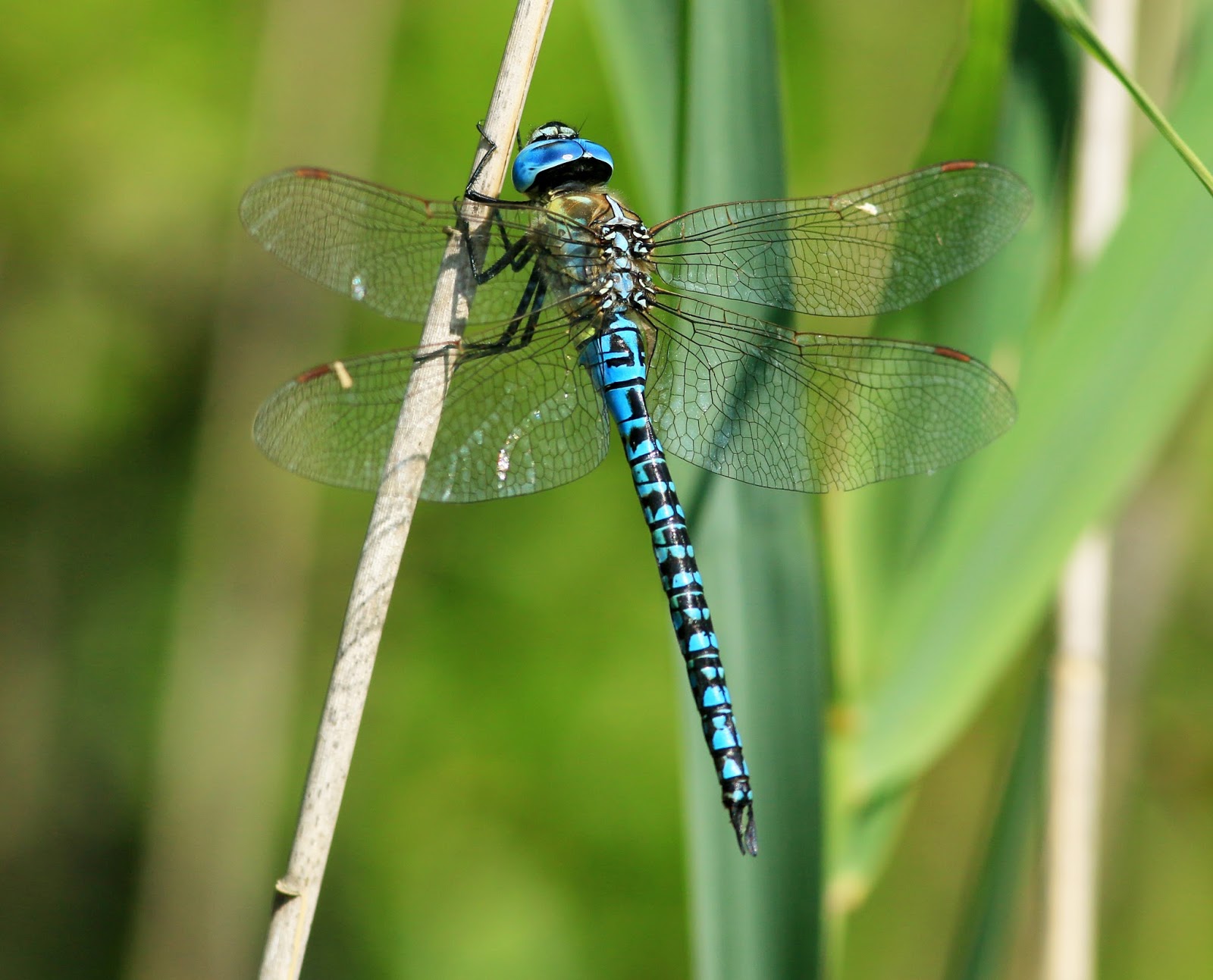
Prior to the 1980s historic records show that this species was, as its name suggests, a migrant to VC 55. From the 1980s onwards, however, the Migrant Hawker has become a widespread species and a familiar sight during its late summer flight period; owing to this late emergence it is still probably under recorded as most observers of Odonata are most active in the early to mid summer periods. The Migrant Hawker breeds in a variety of well vegetated aquatic habitats and is often also recorded well away from water.

